Childrey Warren WTW Abstraction Closure (2020)
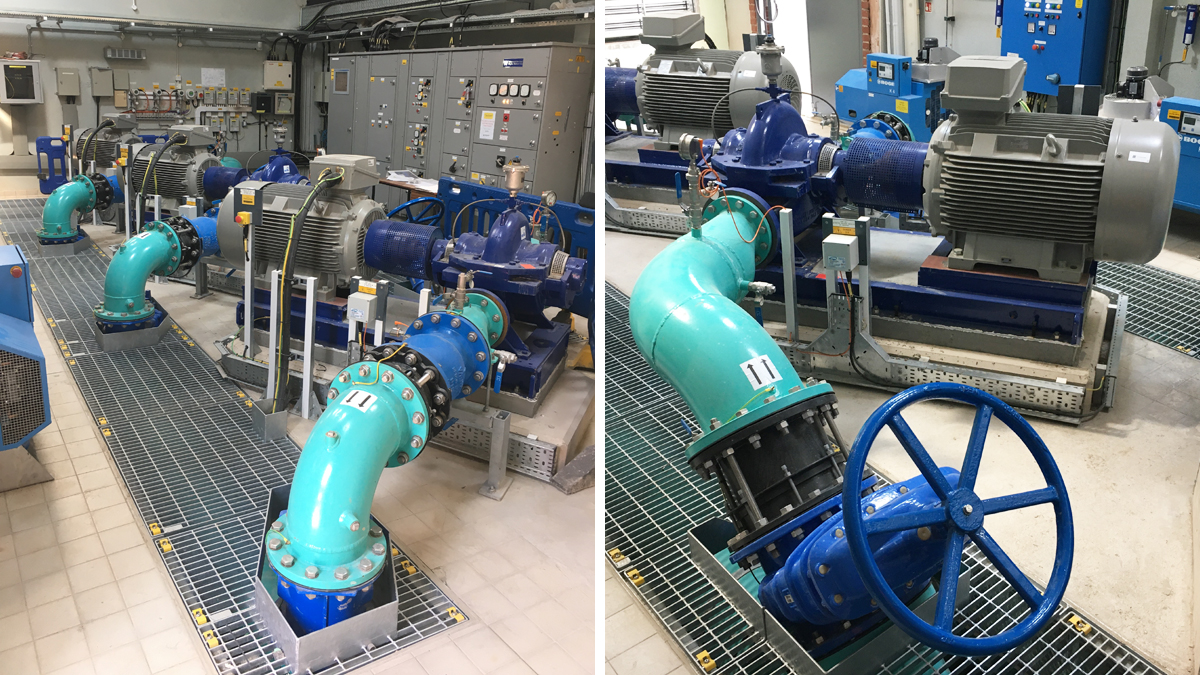
Hagbourne WBS pump manifold (left) delivery side and (right) suction side - Courtesy of SMB
During AMP4, Thames Water Utilities Ltd (TWUL) undertook low flow investigations for the Letcombe Brook, in the Wantage area of Oxfordshire. It was determined that the abstraction at Childrey Warren Water Treatment Works (WTW) was having an adverse impact on the river flows and the local environment. A subsequent review of options which included augmentation, works closure and river remediation identified the most cost beneficial to be the full cessation of abstraction at Childrey Warren and utilisation of available resource within the wider SWOX (Swindon and Oxford) Water Resource Zone. Under the National Environment Programme this resulted in an agreement between TWUL and the Environment Agency that abstraction would cease by the end of AMP6 (March 2020). Closure of the works as an abstraction site was promoted and subsequently supported within the TWUL PR14 Business Plan.
An overview of the pre-construction phase for the scheme was published in UK Water Projects 2019 which provides details around the optioneering, outline and detail design. Emphasis is provided on the digital delivery through utilisation of technologies such as 3D laser scanning, drone topographical surveying and 4D programming.
This case study details the construction elements of the Childrey Warren WTW Abstraction Closure project.
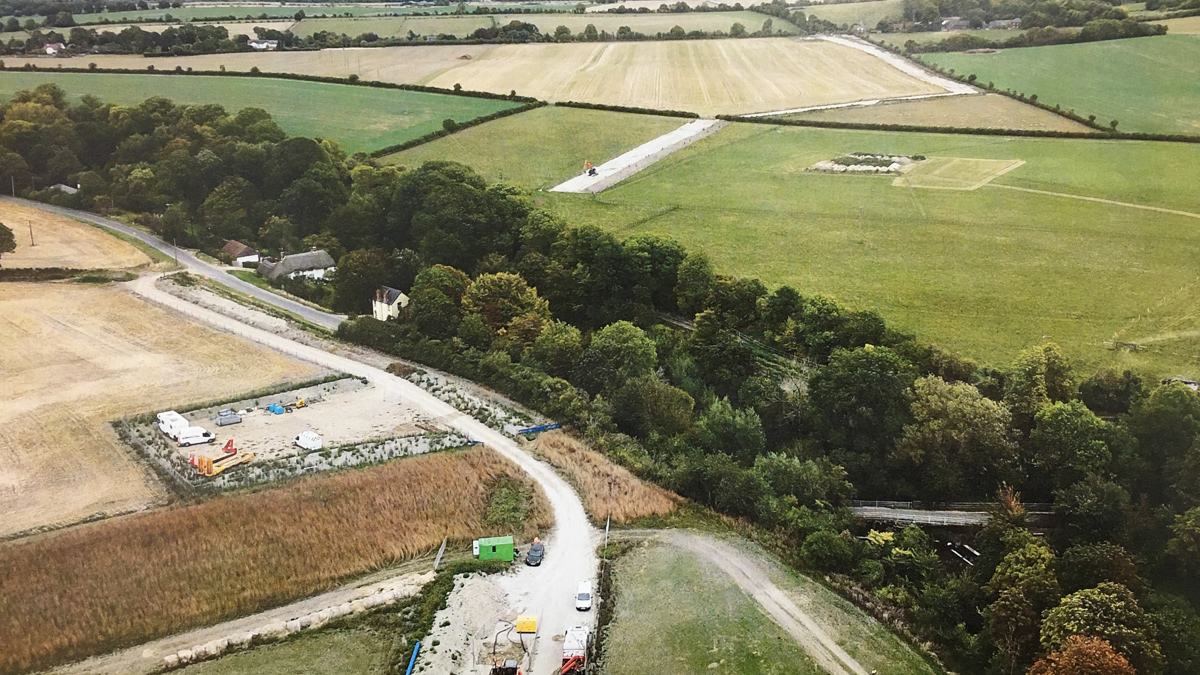
Aerial view (looking east) of Letcombe Brook HDD installation – Courtesy of SMB
Childrey Warren WTW Abstraction Closure (Construction Phase): Supply chain key participants
- Client: Thames Water Utilities Ltd
- Principal designer/contractor: SMB JV (Design consultancy – Stantec UK)
- Commissioning engineers: LJR Engineering
- Civils sub-contractor: J Browne Construction Ltd
- HDD sub-contractor: Peter McCormack & Sons Ltd
- MEICA sub-contractor: Bridges Electrical Engineers Ltd
- Systems integration: Peak42
- Sahara & CCTV surveys: WRc Infrastructure
- HPPE Pipe: Aliaxis UK (formerly GPS PE Pipe Systems)
- Valves & pipeline ancillaries: AVK UK Ltd
- Pumps, motors & flywheels: KSB Ltd
- Surge vessel: Quantum Engineering Developments Ltd
- Generator & fuel tank: Power Electrics Ltd
- MCCs: Bridges Electrical Engineers Ltd
- Gantry cranes: Bramley Engineering (Lifting Gear) Ltd
- SEMD Electronic Security: Reliance
- Fire protection systems: Protec Fire & Security Group
Pipeline between Lark Hill Reservoir and Childrey Warren WTW
The new pipeline between Lark Hill Reservoir and Childrey Warren WTW is a 6.1km 450mm OD PE100 SDR17 gravity pipeline. The pipeline route crosses predominantly agricultural land via open cut method. The route incorporates 3 (No.) horizonal directional drill (HDD) sections totalling approximately 630m, utilised to cross the A338, Letcombe Brook/Bassett Road and Holborn Hill Road.
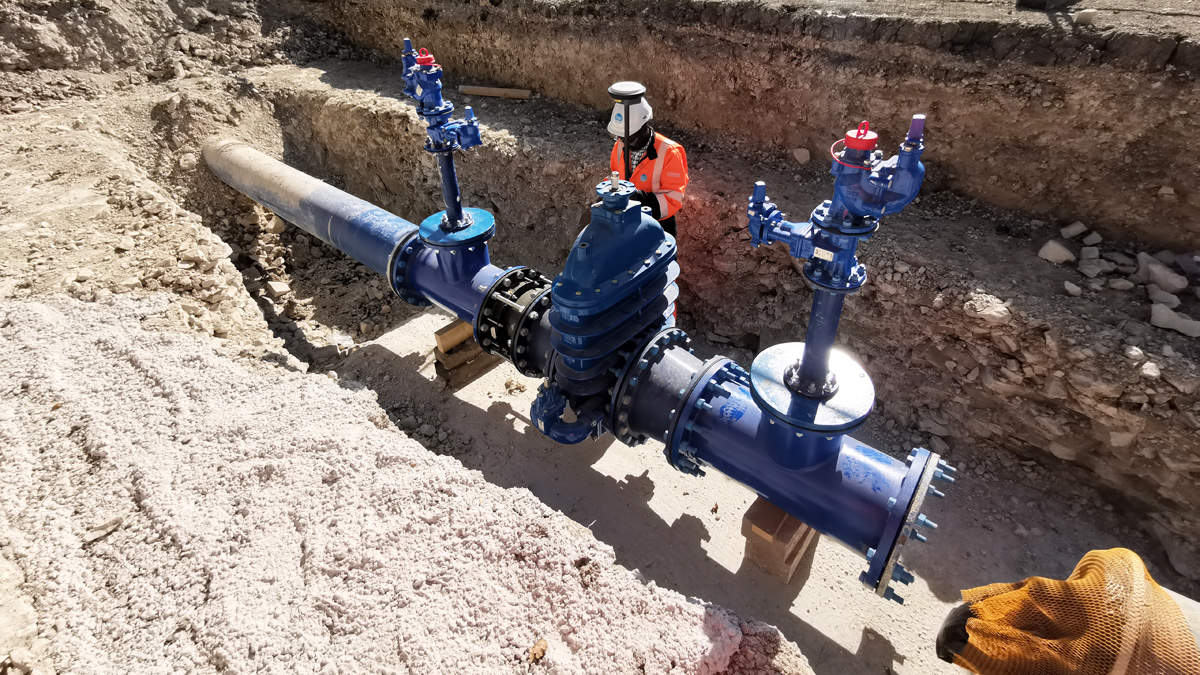
Line valve and washout (OXO) arrangement – Courtesy of SMB
The new pipeline will operate as a dedicated transfer trunk main between Lark Hill and Childrey, extending the existing Hagbourne to Lark Hill system. The design of the pipeline incorporates on-line ancillaries including line valves, washouts and air valves. A series of OXO arrangements (washout/line valve/washout) are installed at intervals along the pipeline to provide flexibility for operation, maintenance and inspection regimes.
Crossing the Letcombe Brook proved to be the most difficult section of the pipeline route due to the requirement for a challenging HDD installation. The pipeline passes 3m below the stream invert and crosses a section of the Brook that sits within a 20m deep by 50m wide section of the Letcombe Valley. The required drill radius and angle of attack resulted in a 290m linear HDD through varying strength chalk.
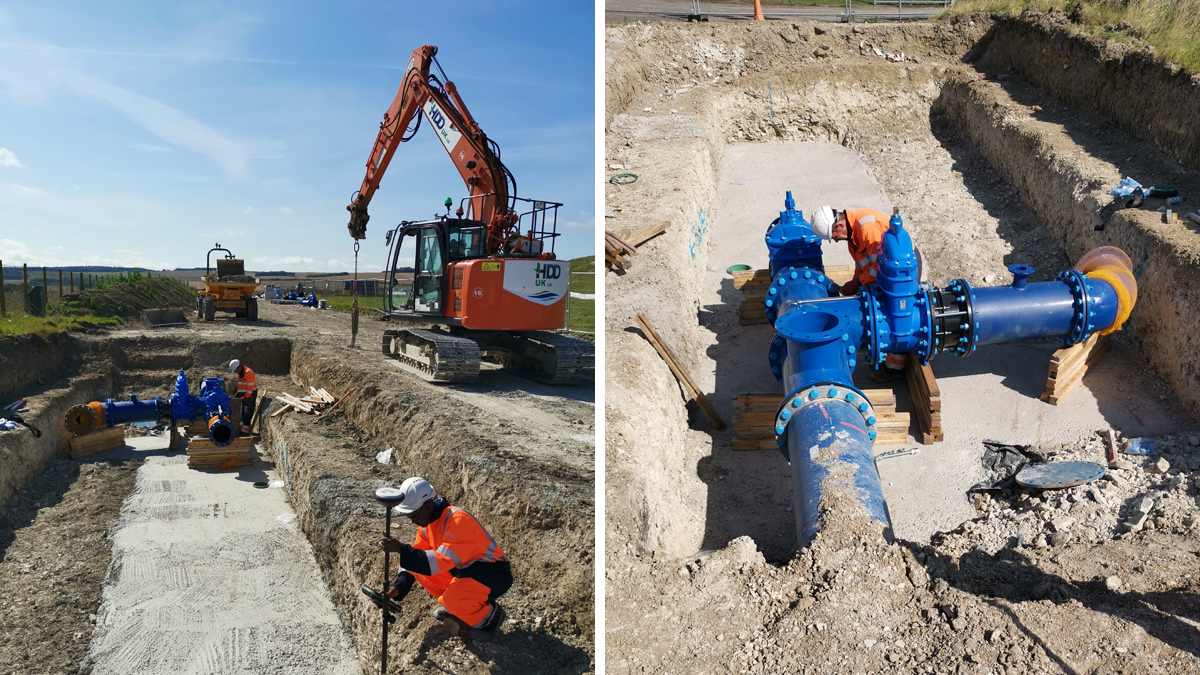
Lark Hill pipework installation – Courtesy of SMB
Lark Hill Reservoir
Works at Lark Hill include the end connection for the start of the pipeline, teeing into the reservoir gravity outlet main, incorporating a flow meter and bypass arrangement, new control panel housed within a walk-in kiosk and upsizing of 2 (No.) existing reservoir flow meters and associated access chamber.
Works at the service reservoir were phased in 3 sections to ensure the site could be maintained as operational throughout. Deep excavations of 3.5m were required directly in front of the valve house to facilitate teeing into the outlet main and upsizing of the existing reservoir flow meters. Following reinstatement of those works the pipeline flow meter and bypass arrangement could be constructed, connecting to the first phase of open cut pipeline towards Childrey.
A new 2.4m x 2.5m footprint walk-in kiosk was installed on site to locate the new control panel and flow meter instrumentation, segregating the transfer pipeline equipment from the reservoir instrumentation located within the valve house.
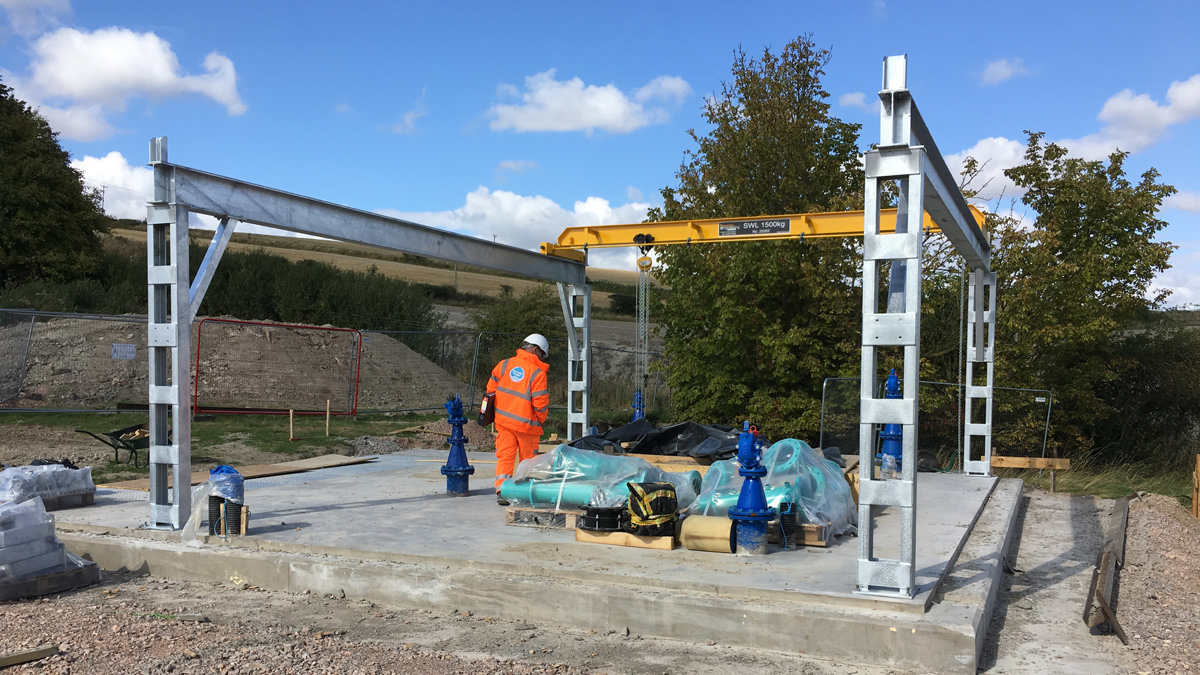
Childrey Warren WBS gantry crane installation – Courtesy of SMB
Childrey Warren Water Booster Station (WBS)
The 4.5 Ml/d (53 l/s @ 50m delivery head) booster station comprised 2 (No.) variable speed centrifugal pumps operating in a duty/standby arrangement. Pumps orientated horizontally incorporating flywheels for surge suppression, located in a large walk-in kiosk (approximately 9m x 8m footprint) located within the site boundary of Childrey Warren WTW.
Other on-site works at Childrey include the WBS suction pipework connection from the new pipeline, WBS discharge pipework connection to the existing network, flow meter and bypass arrangement and electrical/ICA connectivity back to the existing site MCC.
The construction of the new booster station started with the excavation and installation of the suction and delivery pipework that would be located below and enter through the RC base slab. The slab could then be poured and gantry crane installed with clear access available. The large flat pack style security rated GRP enclosure could then be delivered to site and installed, providing a weatherproof environment for the MCC, electrical and pump installation to be completed.
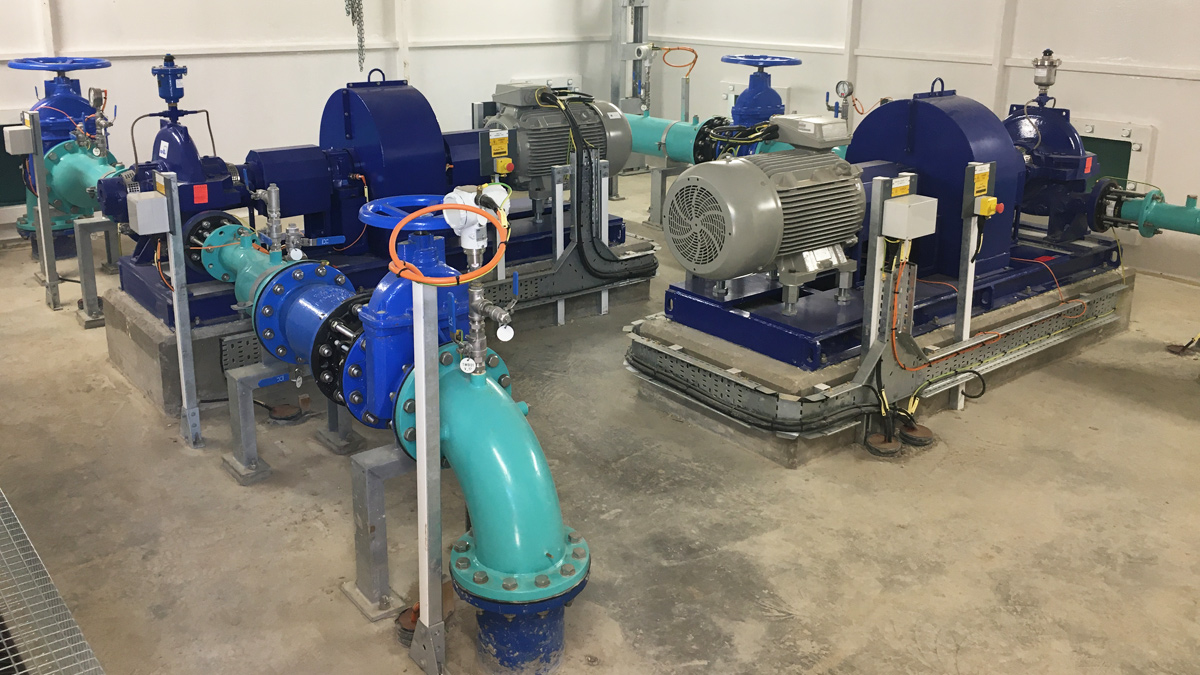
Childrey Warren WBS completed pump manifold – Courtesy of SMB
Hagbourne Hill Water Booster Station
The existing Hagbourne Hill WBS comprised duty/standby fixed speed pumps providing approximately 60 l/s. Works at the WBS included the full upgrade and extension of the booster station to provide a future capability of 15 Ml/d (175 l/s @ 85m delivery head) comprising 3 (No.) variable speed centrifugal pumps operating in a duty/assist/standby arrangement. The WBS has been completely remodelled with an extension to the existing building to create a dedicated MCC room, extension of the pipe manifold trench, motorised overhead gantry crane, new external plant comprising surge vessel, generator and fuel tank, fuel delivery area, extension of site hardstanding and creation of dedicated SSE compound for new HV transformer.
Collaborative use and sharing of the BIM model between Stantec UK, Bridges Electrical Engineers Ltd and the supply chain has been accommodated using Autodesk 360 Glue. Bridges have also utilised Autodesk 360 Field for onsite document and quality management.
Due to the requirement of maintaining operation and output of the existing Hagbourne WBS it was critical to execute the scope of works in line with the detailed programme built around the 4D modelling undertaken in the design phase. The use of 4D modelling was essential to build a programme that transitioned between temporary and permanent works for both the existing and new WBS layouts and assets, achieving buy in from all parties for the construction and commissioning phases.
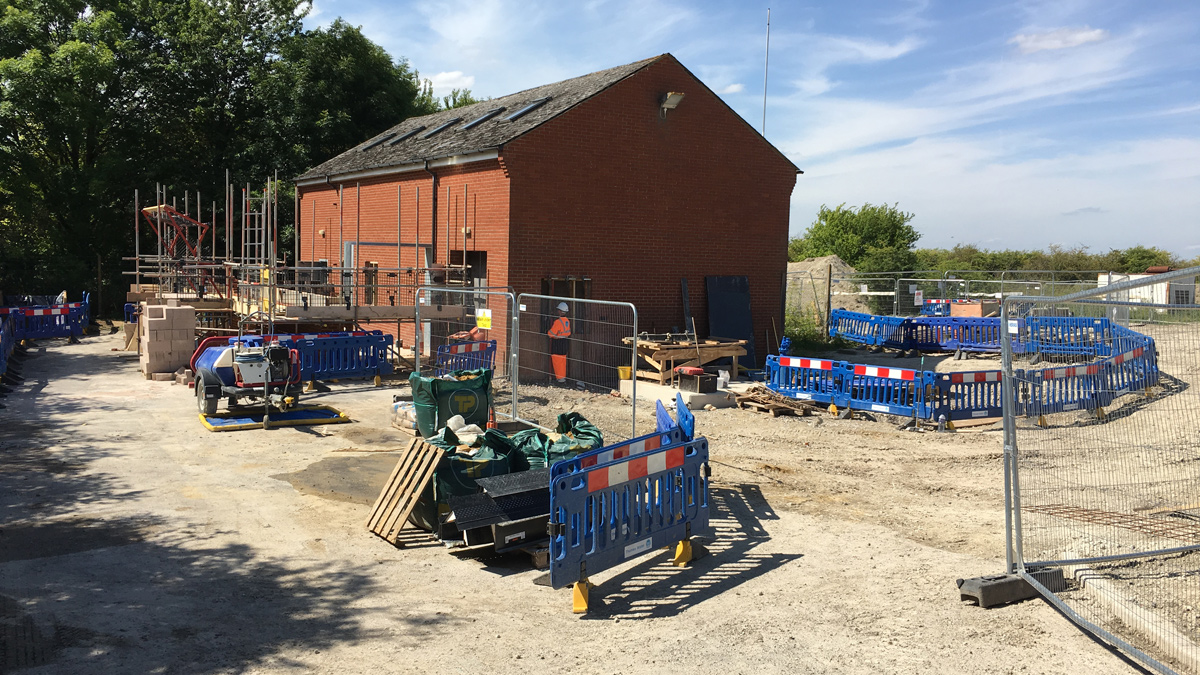
Hagbourne WBS site clearance and extension construction – Courtesy of SMB
The sequence of works started with the removal of all existing redundant plant, construction of new external pipework connections and building extension, installation of new surge vessel (to facilitate removal of existing) and initial phase of civils works to facilitate the relocation of the existing pumps to their temporary arrangement. With the main works area cleared the second phase of works could then begin, comprising the installation of overhead gantry crane, extension of pipe trenches, installation of new pipework manifold and pump sets and completion of all external civils and new generator and transformer installation.
A key piece of work requiring additional planning was the breaking out of the existing mess room floor to create an extension to the pipe trench, accommodating the new larger suction and delivery pipework. Based on record drawings for the site the plan was to manually break out the thin concrete slab to the mess room due to the restricted access via a single door and narrow corridor. Following initial site works it became apparent the floor was an extension of the main structure, comprising a 300mm thick RC slab. A revised plan was agreed which required a dedicated piece of equipment for the task.
Equipped with a 5.5kW three-phase electric motor, the Brokk 50 demolition robot is a highly manoeuvrable machine that is so compact it can fit through doors as narrow as 60cm wide. It took the Brokk 50 just a day-and-a-half to break out the concrete floor, which would have taken an estimated two-and-a-half-weeks otherwise. Being remote-controlled, the robot also has the advantage of completely avoiding any threat of hand-arm vibration to the site team.
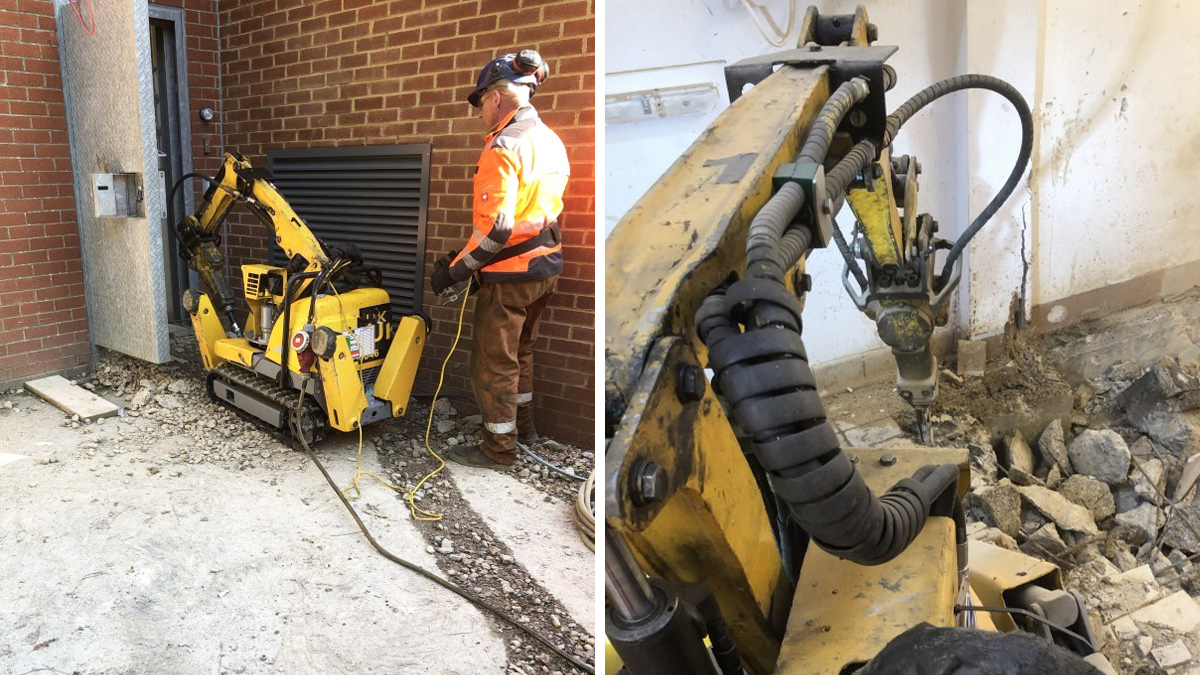
Remote controlled breaker at Hagbourne WBS – Courtesy of SMB
Commissioning
The various phases of works at each site have been tested and commissioned independently prior to the full system coming online as a fully automated operational network. This approach ensures a rigorous QA system is followed to approve each component for potable water operation.
The new pipeline is fully pressure tested at 10 bar to ensure structural integrity and no leakage. This is followed by a foam swab being passed through the pipeline under pressure to ensure the internal surface is clean of sediment and debris. The main is then disinfected with a high concentration of chlorine which is then flushed through until only acceptable residual levels remain, following which a series of water quality tests are performed to provide approval for placing the pipeline into service.
A key task that is undertaken on all new trunk mains following commissioning is a Sahara leak detection baseline survey, undertaken by TWUL framework provider WRc Infrastructure. This provides assurance the new pipeline is free of any leakage and fit for purpose. The survey is a non-disruptive in pipe system, utilising the various inline fittings for insertion of an acoustic sensor mounted on an umbilical cable for precise control. Surveying the full pipeline is broken down into suitable lengths based on location of fittings and available flow velocity to carry the sensor along via a drogue. Even at relatively low velocities survey lengths along the new main of up to 900m were achieved. The surveys were repeated with the exchange of the acoustic senor for a CCTV unit to provide total assurance to the client that the installation had been completed without issue.
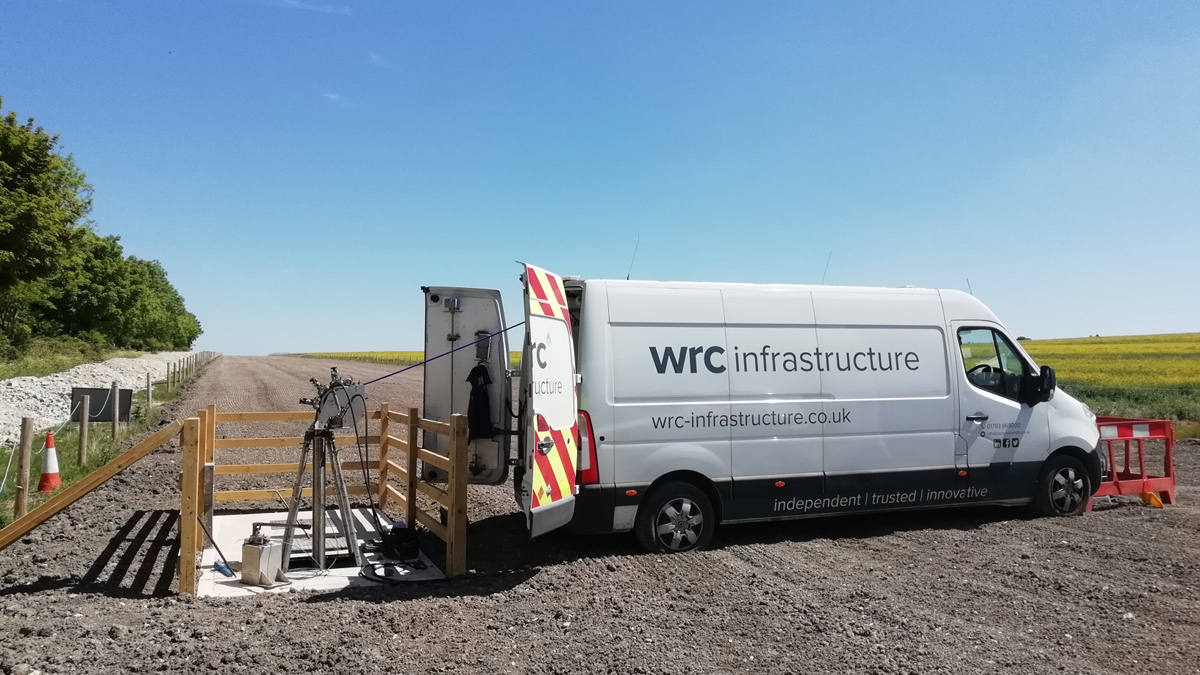
Pipeline Sahara and CCTV surveying – Courtesy of WRc Infrastructure
At both Childrey and Hagbourne booster stations a series of Site Acceptance Tests are completed on the associated plant and equipment prior to undertaking local commissioning activities. Pressure testing, disinfection, flushing and water quality acceptance tests are completed, enabling local control testing to begin. Approval of this phase and in parallel to the pipeline commissioning, the remaining physical gaps in the pipework can be pieced in and a full systems test undertaken, moving water through the network in to supply.
The new system will complete a 28-day reliability period to ensure full automated operation without intervention prior to formal acceptance by the Client. Final works comprise the decommissioning of the temporary pumps and pipework at Hagbourne WBS following successful completion of trial period. Reinstatement works can then be completed and full demobilisation from all sites.
Summary
The Childrey Warren abstraction closure scheme has ultimately been delivered to safeguard the Letcombe Brook, a chalk stream of national significance that has been recognised by the Environment Agency and Thames Water. The regulatory date of March 2020 was successfully achieved for cessation of abstraction from Childrey Warren WTW will all new assets constructed and commissioned to programme. By deriving the wider scheme outputs from a zonal outcome, additional benefits have also been delivered including resilience to supply for the Wantage and Hackpen zones and meeting future demand for an area planned for significant development over the 25-year design horizon.







